In the “drinking” and business Milan, the city of skyscrapers and technology, modernity and design, where people work and produce, there is a whole artistic heritage to discover and appreciate. And we are not just talking about the best-known places, such as the Brera Art Gallery or the Duomo or Palazzo Reale, the Pinacoteca Ambrosiana, the Poldi Pezzoli Museum, the Museum of the Twentieth Century, the Gallerie d’Italia and other well-known places. The cultural face of Milan is rich and well known, but in the variety of this heritage there is still much that deserves greater appreciation and that, outside the classic guidebook destinations for the first visit to the city, can rightly claim its place in a visit to Milan. Here are some pointers.
The structure that now houses Milan’s Civic Archaeological Museum is the Monastero Maggiore of Benedictine nuns to which is attached a church that constitutes one of the city’s most beautiful treasures: the church of St. Maurice at the Major Monastery, what Vittorio Sgarbi called the “Sistine Chapel of Milan.” In fact, the church’s interior houses a cycle of frescoes along all the walls, chapels, and ceilings, lavishly and elegantly decorating it, which were worked on repeatedly for nearly a century by various artists of the Leonardo school (starting with Bernardino Luini, Giovanni Paolo Lomazzo, and Giovanni Boltraffio). Work on the church, of early Christian origin, was begun in the early 16th century by the architect Gian Giacomo Dolce, and with its sober exterior in gray Ornavasso stone it does not portend how much can be found inside made possible by donations from the nuns’ families, including Ippolita Sforza. A single-nave church with side chapels above which there are women’s galleries overlooking the nave with serliane loggia, it has the distinction of probably being the first to have a dividing partition wall to prevent the celebration of the rite with promiscuity between the faithful (who entered from Magenta Street) and the cloistered nuns, who in their part sat in a beautifully crafted wooden choir that is still well preserved and could take communion through gratings placed in the partition wall. A solution that was brought as an example by St. Charles Borromeo for similar constructions to follow. Everywhere it is richly decorated making it an outstanding example of Lombard Renaissance painting.
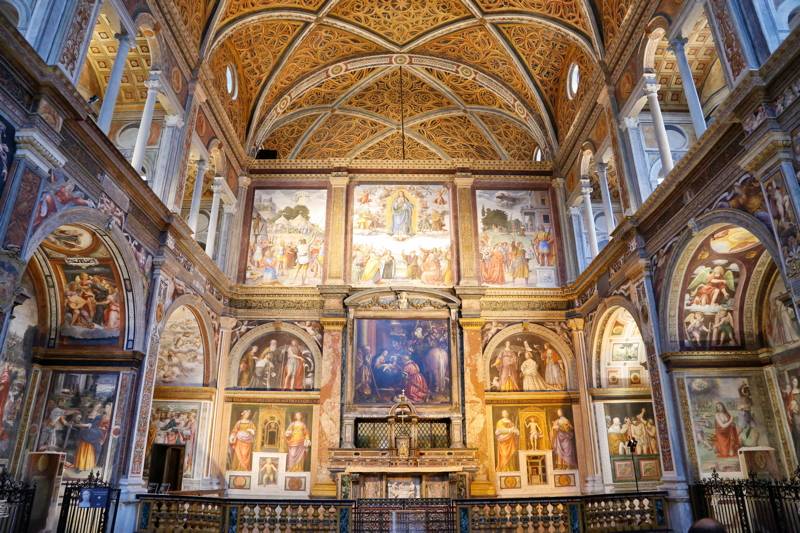
A few hundred meters from Milan Cathedral, near the Basilica of Santo Stefano, there is a church peculiar for its contents: a huge amount of bones and skulls used as wall decoration: it is the Sanctuary of San Bernardino alle Ossa. Homers, shinbones, skulls, femurs, and the other human remains, however, are not of saints or martyrs but of people who died in the nearby hospitals in its vicinity from 1100 onward until, due to various vicissitudes and logistical problems, they were used as if they were Baroque or Rococo ornaments by the Confraternity of the Disciplines in the 18th century. The charnel house proper is a simple building with a square base where in the middle is the altar and in one wall the niche with Our Lady weeping Jesus deposed from the Cross. And look up and you will notice one of the most beautiful frescoes in Milan: that of Sebastiano Ricci decorating the vault. As much as it is a place of worship fully of the Christian religion with it is associated a legend that has nothing to do with orthodox doctrinal canons: in fact, it is said that on the night of November 2 the bones reassemble themselves into skeletons to give life, it is appropriate to say, to an unspecified dance. One cannot wonder how the two thousand years of Christianity can be juxtaposed today with a 1980s American TV show story, which moreover can be debunked in person every year on that date. It is the interplay of tradition and modernity in a city as unique as Milan.
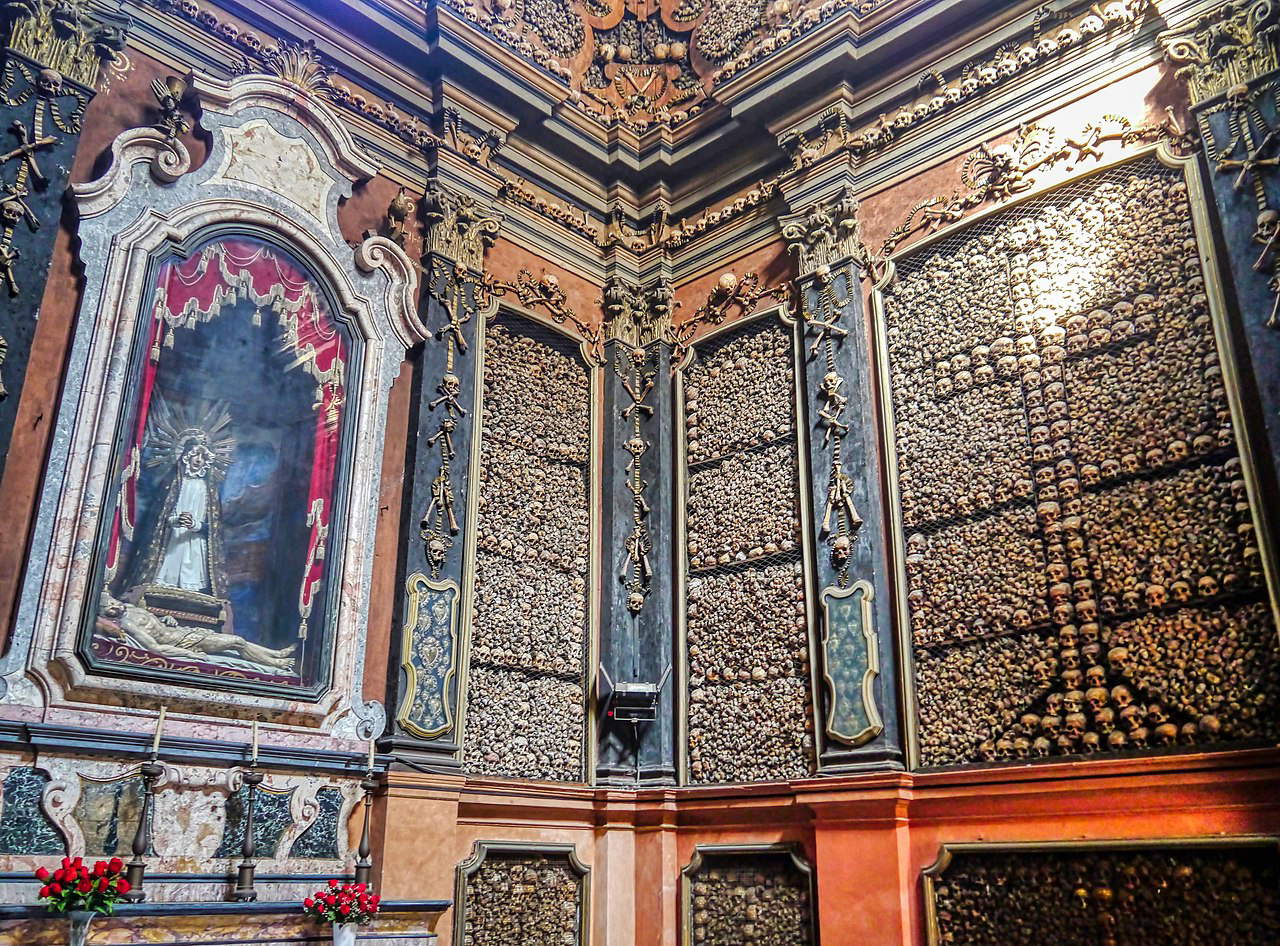
Among the most important churches of Milanese Christianity is the Basilica of Sant’Eustorgio. It is of early Christian origin (when Mediolanum was the capital of the Western Roman Empire. The remains are still visible under the apse) was initially named after the Three Kings as tradition has it that their remains are kept here, in the sarcophagus located in the right transept, which again according to tradition was used by Bishop Eustorgio to transport their remains from Constantinople. Also in the Chapel of the Magi is the Ancona of the Magi attributed to Jacopino da Tradate, a marvelous marble triptych with cusped panels. Also not to be missed are the Brivio Chapel with its Renaissance architecture, the Torelli Chapel with its sumptuous funeral monument to Pietro Torelli (another work by Jacopino da Tradate), and especially the Portinari Chapel with its cycle of frescoes by Vincenzo Foppa, a genius of the Lombard Renaissance. And that alone would be enough for everything: the concentration of works of art (frescoes, canvases, sculptures...) at this site in its thousand-year history is the result of devotion to these important relics. On the spire of the bell tower (the tallest in Milan at 73 meters high) there is a star, symbol of the Magi, and by centuries-old tradition on Epiphany Day there is the historical procession of the Magi that arrives here from the Duomo. And vice versa, every new bishop of Milan to enter the city on the first day starts from this Basilica with a procession to the Duomo. And also here is the Diocesan Museum.

In the middle of a large park in the middle of the city of Milan, at 14 Via Mozart, we find a piece of 20th-century Milanese history: Villa Necchi Campiglio. Sisters Nedda and Gigina Necchi, together with Gigina’s husband Angelo Campiglio, had their house built in the 1930s by one of the leading architects of the time, Piero Portaluppi. What was to be the Milan home of the Necchi Campiglio family, from a wealthy industrial bourgeoisie originally from Pavia, became an opportunity for Portaluppi to experiment with futuristic architectural and plant solutions for the time with the first examples of a swimming pool (with heated water) and tennis court, retractable security doors that sealed the house with a button by rising from the floor, an elevator, freight elevators, intercoms and telephones. Modern yes, but also extremely elegant and refined, with attention to every detail even in the furnishings that are still perfectly preserved. We step out of the Milan of the 2000s and dive into the rationalist-style Milan of the last century. Enriched over the years with collections of paintings and furnishings by artists such as Giacomo Balla, Umberto Boccioni, Giorgio de Chirico, Giorgio Morandi, Mario Sironi, Adolfo Wildt, Canaletto, Giovanni Battista Tiepolo, the collections of Claudia Gian Ferrari, Alighiero and Emilietta De’ Micheli and Guido Sforni, it is a place that can be visited today as, having no children, Gigina donated it to Fai and today it is a house museum. Jewel.
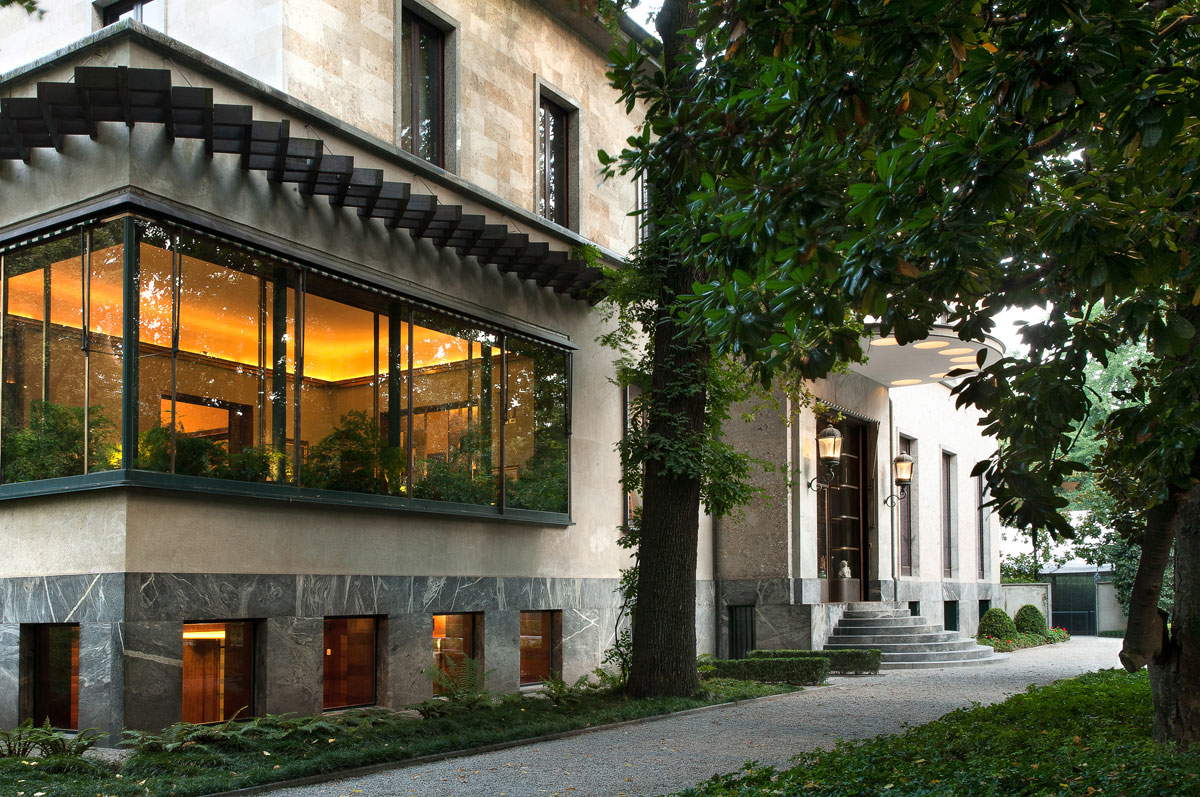
The church of San Bernardino alle Monache is what remains of an articulated monastic complex founded at the end of the 13th century to follow the rule of St. Augustine and then passed under the Franciscan order to follow the rule of St. Clare. Later, the church was consecrated to the cult of St. Bernardine by assigning it the preservation of some relics. Valuable example of fifteenth-century late Gothic architecture inside it are preserved frescoes of considerable value. The façade has a round-arched portal surmounted by two single-light side windows with pointed arches and a small circular oculus embellished with majolica bowls; the interior has a single nave concluded by a square choir grafted behind the triumphal arch and is divided into two bays by a transverse arch supported on corbels, with cross vaults on the ribs. There are then important frescoes from the fifteenth and sixteenth centuries.

The shrine of St. Mary of the Miracles near San Celso is linked to the miraculous personification of Our Lady in 1485 frescoed on a niche stele inside a chapel adjacent to the Benedictine abbey of San Celso, which was then followed by the disappearance of the Plague that had been scourging Milan for four years. After the apparition it was decided to build a shrine to venerate the image, the one that now still stands beside San Celso, becoming Milan’s first example of Renaissance architecture. Enlarged and embellished several times (work and alterations will be carried out until the mid-1800s), it is characterized by the presence of a quadriportico (by Cristoforo Solari) in front of the entrance, the sumptuous facade in Carrara marble made about a century later by Martino Bassi making it a masterpiece of Mannerism, and the octagonal dome covered on the outside by a triburium with a loggia and 12 statues depicting the Apostles. Also by Martino Bassi is extraordinary marble flooring, which under the dome is of exceptional scope. Following the evolution of religious canons, the works of art inside reflect the artistic traditions of Lombard Christianity with specimens of primary cultural interest. It is customary for every Milanese bride after her wedding to bring a bouquet of flowers here for the Madonna. Works to dwell on include Gaudenzio Ferrari’s Baptism of Christ , Callisto Piazza’s St. Jerome , and one of Moretto’s greatest masterpieces, the Conversion of St. Paul.
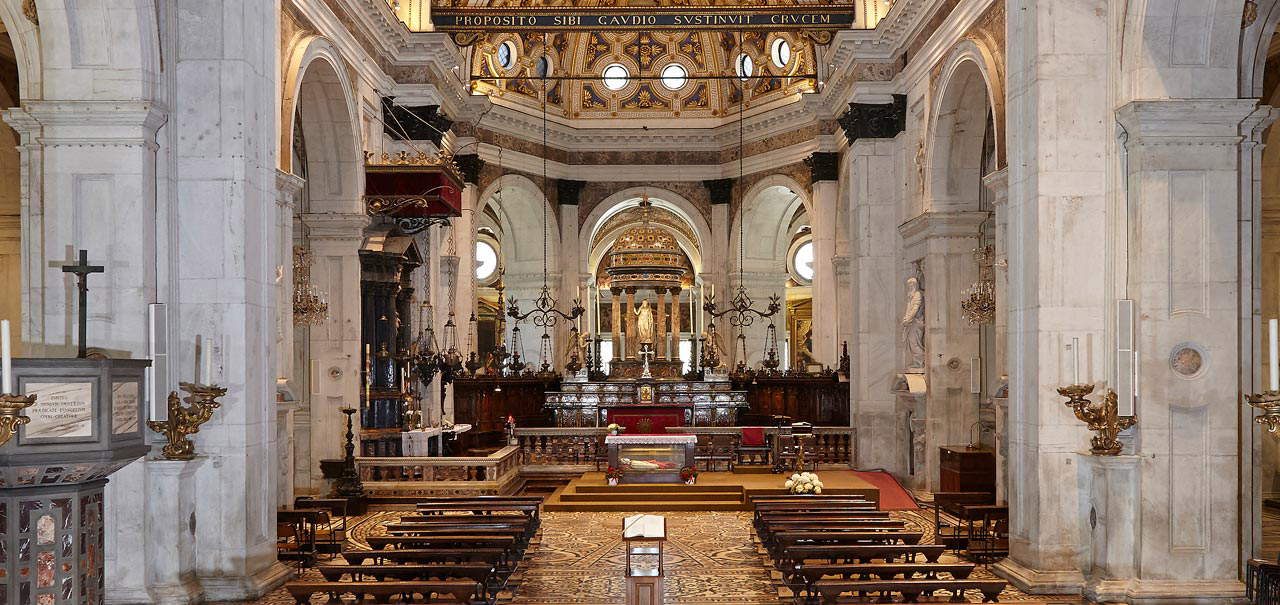
The Bagatti Valsecchi house-museum is another example of the enlightened bourgeoisie that helped make Milan a city of culture. Here, in fact, we have the family home of the two brothers Fausto and Giuseppe Bagatti Valsecchi, which was at their behest progressively furnished, adorned and embellished following artistic inspiration in the style of those Lombard aristocratic houses of the sixteenth century. They were distinguished by a meticulous precision in the search for furnishings and antiques that today makes it one of Italy’s best house museums. As Giuseppe Bagatti Valsecchi had this to say, “It was not intended to be a museum or a collection, but rather the reconstruction of a stately home from about the middle of the sixteenth century from which one can find fifteenth- and sixteenth-century objects of the most varied kinds: paintings, tapestries, carpets, furniture, weapons, ceramics, bronzes, glass, jewelry, irons, domestic utensils of all qualities collected with careful study and restored to their original use.” And so every added element, from friezes to wall hangings to fireplaces, from wrought-iron ceilings to wooden ceilings we find one harmonious environment that binds from the architectural style to the furnishings, of great elegance and refinement.
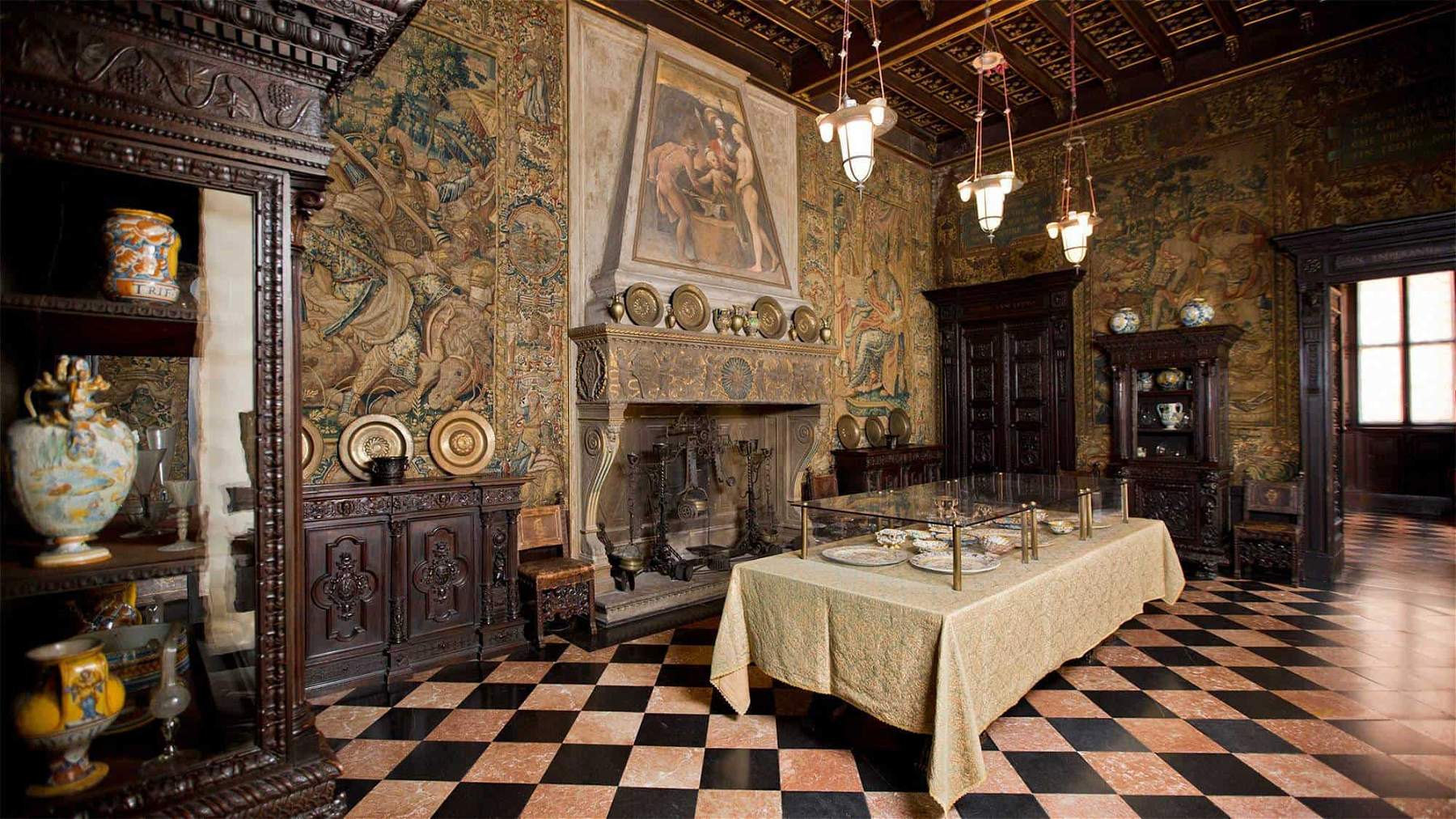
Walking around Milan you may happen to come across a castle of cards, huge ones. After the initial bewilderment, realizing that we have not ended up in the “Magical World of Oz,” we realize that we are in the futuristic City Life district, between Viale Berengario and Via Benedetto Brin, and that the installation in front of our eyes is Love Art 4 All, a work born from the collaboration between Rinaldo Denti (current owner of Castello Pozzi), Elio Fiorucci and Giuliani Grittini in 2014. We are in front of Castello Pozzi: a villa built in 1929 by architect Livio Cossutti named for the turret with mullioned windows, to be the home and place of work of a character who first understood the value of Fashion for Milan, Claudio Tridenti Pozzi, which is now an art gallery home to many private collections. Cards the size of large windows in the evening are illuminated with neon light effects.
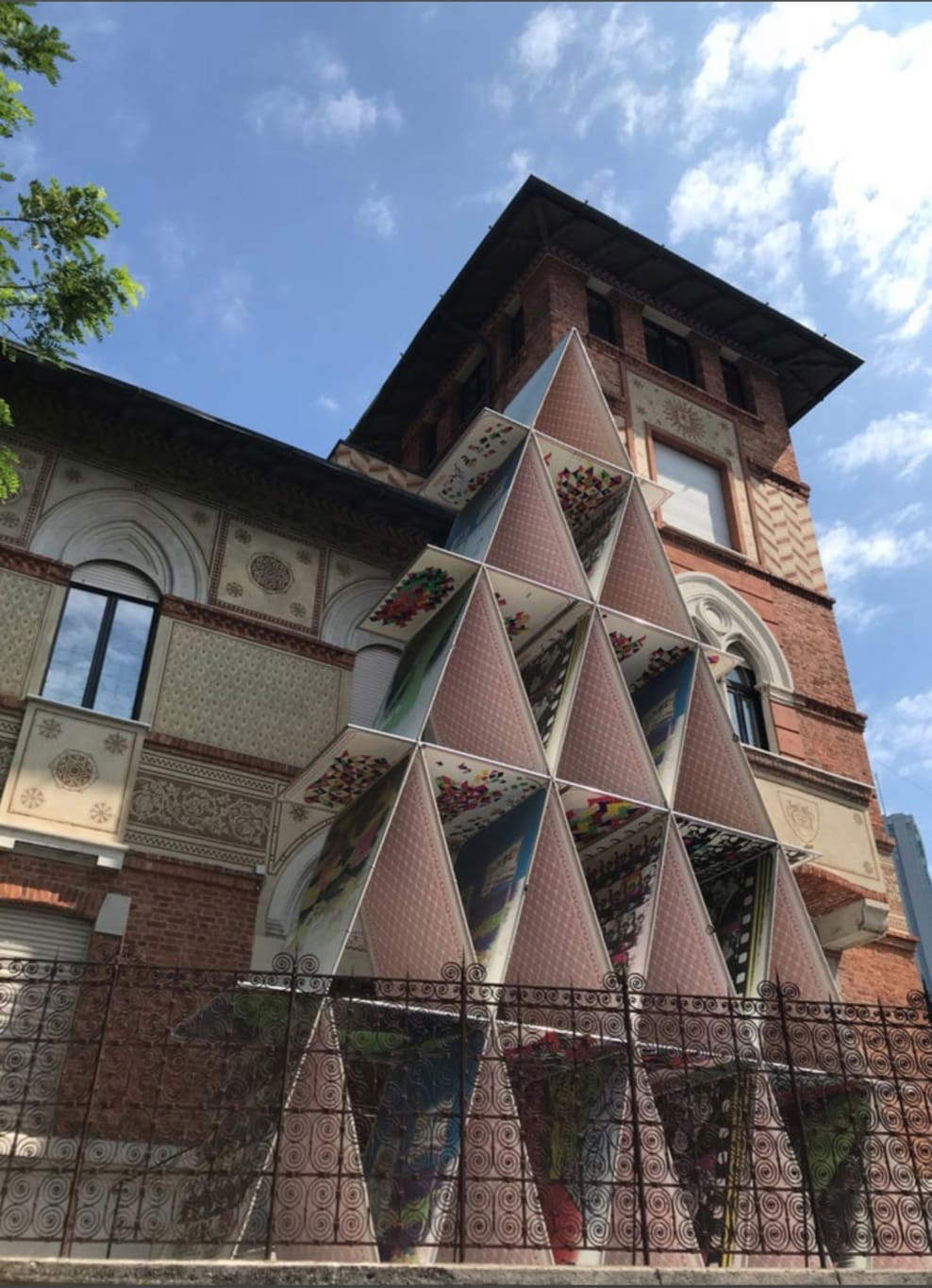
Urban regeneration thanks to an industrial conversion: this is the Pirelli Hangar Bicocca, a 15,000-square-meter metal-mechanical factory plant transformed by Pirelli, through a foundation, into a large exhibition area, a center for the production and promotion of contemporary art. From the making of trains and locomotives to a place where art is for everyone: in fact, admission to all exhibitions held is free. Innovative solutions in conceiving the space available both for related services (such as film reviews) as well as the project for children with creative and educational paths designed for children and their expressive capacity. Among the many scheduled initiatives and events you will always find a work here on a permanent basis: Anselm Kiefer’s Seven Heavenly Palaces. a mammoth work consisting of 7 reinforced concrete towers and container modules weighing 90 tons (each) high towering between 14 and 18 meters. Milan is projecting itself into the international contemporary art scene, giving even emerging artists a way to express themselves and the public a chance to approach new proposals.

In the history of art, Donato Bramante’s fake choir in the church of Santa Maria presso San Satiro is considered a masterpiece of perspective painting. To overcome the physical impossibility of making the apse, Bramante’s genius devised this trompe l’oeil perspective system that with the 97-centimeter space available behind the altar creates a visual effect of almost 10 meters with a barrel vault with coffers. Anyone entering has this impression that is only revealed by getting very close to the altar. Bramante was called to enlarge the church dedicated to San Satiro, which with the occurrence of a miraculous event saw an increase in the devotion of the faithful and the need for adequate context for the fresco of the Madonna and Child (from which blood flowed) to be venerated. The space therefore was the pre-existing one but did not see him demur. He designed and supervised the construction between 1476 and 1482 the church, which had three naves and the characteristic dome at the intersection with the transepts. In keeping with the proportions for the building made there should have been a development in depth behind the altar that could not be there, in which circumstance it came out how much of genius such a great artist could. Finally, in the sacellum of San Satiro will be found another masterpiece of Renaissance Milan: the Pietà by Agostino Fonduli, one of the most interesting sculptural complexes of its time in northern Italy.
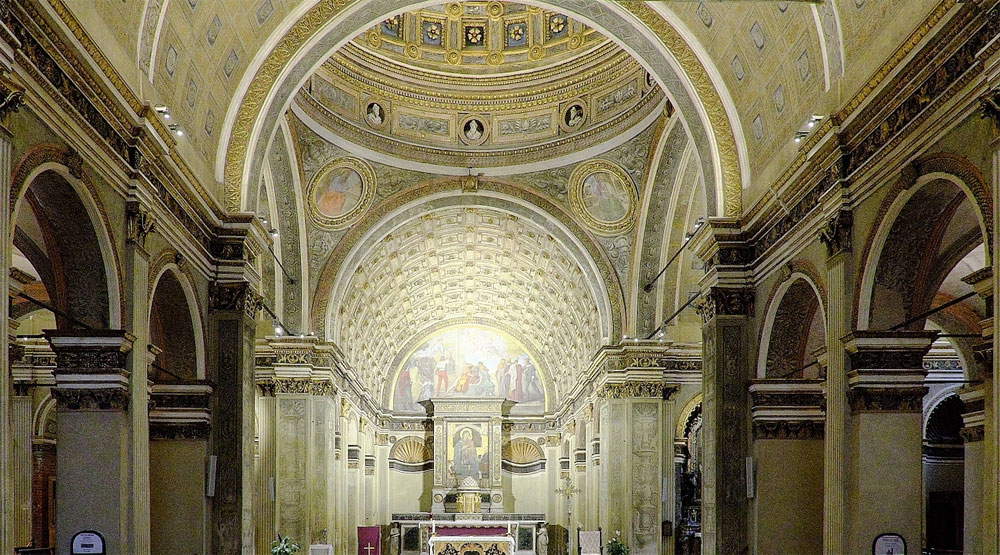
 |
| 10 unusual or little-known places to see in Milan |
Warning: the translation into English of the original Italian article was created using automatic tools. We undertake to review all articles, but we do not guarantee the total absence of inaccuracies in the translation due to the program. You can find the original by clicking on the ITA button. If you find any mistake,please contact us.